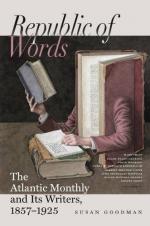It has long been known that machines do not create force, but only communicate, distribute, and apply that which has been imparted to them, and also that a definite amount of fuel corresponds to a definite amount of work performed by the steam-engine. This means simply that a fixed quantity of the chemical force of combustion gives rise to a corresponding quantity of heat, and this again to a determinate amount of mechanical effect. Now this principle of equivalency is found to govern the transmutations of all forms of energy. The doctrine of the conservation and correlation of forces has been illustrated in various ways, but nothing has so powerfully contributed to its establishment as the investigation of the relations of heat to mechanical force. Percussion and friction produce heat. A cold bullet, struck upon an anvil by a cold sledge-hammer, is heated. Iron plates, ground against each other by water-power, have yielded a large and constant supply of heat for warming the air of a factory in winter; while water inclosed in a box, which was made to revolve rapidly, rose to the boiling-point. What, now, is the source of heat in these cases? The old caloric hypothesis utterly fails to explain it; for to suppose that there is an indefinite and inexhaustible store of latent heat in the rubbing iron plates is purely gratuitous. It is now established, that the heat of collision, and of friction depends, not upon the nature of the bodies in motion, but upon the force spent in producing it.
When a moving body is stopped, its force is not annihilated, but simply takes another form. When the sledge-hammer strikes the leaden bullet and comes to rest, the mechanical force is not destroyed, but is simply converted into heat; and if all the heat produced could be collected, it would be exactly sufficient, when reconverted into mechanical force, to raise the hammer again to the height from which it fell. So, when bodies are rubbed together, their surface-particles are brought into collision, mechanical force is destroyed, and heat appears,—the heat of friction. The conversion of heat into mechanical motion, and of that motion back again into heat, may be familiarly illustrated in the case of a railway-train. The heat generated by combustion in the locomotive is converted into motion of the cars. But when it is desired to stop the train, what is to be done? Its mechanical force cannot be annihilated; it can only be transmuted; and so the brakes are applied, and the train brought to rest by reconverting its motion into heat, as is manifested by the smoke and




